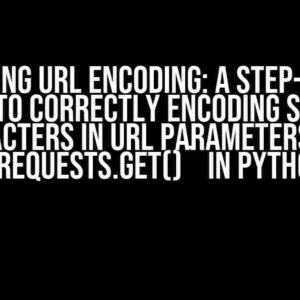Are you tired of having multiple domains for your Blogger site and wanting to redirect traffic from one to another? You’re not alone! Many bloggers face this issue, and it’s essential to resolve it to maintain a consistent online presence. In this article, we’ll show you how to redirect from https://www.example.com to https://example.to.com in Blogger.
Why Redirect Your Blogger Site?
Before we dive into the redirection process, let’s explore the importance of redirecting your Blogger site:
- Consistency**: Having multiple domains can create confusion among your audience. Redirecting traffic to a single domain ensures consistency across all platforms.
- SEO Benefits**: Redirecting helps search engines understand that both domains point to the same content, reducing the risk of duplicate content penalties and improving your site’s credibility.
- Brand Unification**: Unifying your online presence under a single domain strengthens your brand identity and makes it easier for users to remember and find you.
Understanding the Redirect Process
Before we begin, it’s essential to understand the redirect process. There are two types of redirects:
301 Permanent Redirect
A 301 redirect is a permanent redirect that tells search engines and browsers that the original URL has been moved to a new location. This type of redirect is ideal for our purposes, as it ensures that search engines update their indexes and browsers cache the new URL.
How to Set Up a 301 Redirect in Blogger
Now that we understand the importance of redirecting and the type of redirect we need, let’s set up a 301 redirect in Blogger:
- Log in to your Blogger account and go to the Settings > Basic page.
- Scroll down to the CUSTOM DOMAIN section and click on Setup a third-party URL for your blog.
- In the Third-party domain settings section, enter your new domain (https://example.to.com) and click Save.
- Wait for 24-48 hours to allow the changes to propagate.
Verify Your New Domain in Blogger
After setting up your new domain, you need to verify it in Blogger:
To verify your new domain, follow these steps:
- Go to the Settings > Basic page and click on Verify next to your new domain.
- Blogger will provide a TXT record (example.to.com. 1800 IN TXT “google-site-verification=your-verification-code”**). Add this record to your DNS settings.
- Save the changes and wait for 24-48 hours to allow the verification process to complete.
Update Your DNS Settings
To complete the redirect process, you need to update your DNS settings:
Update your DNS settings by adding the following records:
| Type | Host | Value | TTL |
|---|---|---|---|
| A | @ | your-blog-server-IP | 1800 |
| CNAME | www | gv-******.ghs.google.com | 1800 |
Note: Replace your-blog-server-IP with your Blogger server IP address and gv-******.ghs.google.com with your CNAME record provided by Blogger.
Verify the Redirect
After updating your DNS settings, verify that the redirect is working correctly:
Visit https://www.example.com in your browser and check if you’re redirected to https://example.to.com. If not, wait for 24-48 hours and try again.
Troubleshooting Common Issues
If you encounter any issues during the redirect process, check the following:
- Domain Propagation**: Allow 24-48 hours for DNS changes to propagate worldwide.
- TXT Record Verification**: Ensure the TXT record is added correctly to your DNS settings.
- CNAME Record**: Verify that the CNAME record is correct and points to the correct Blogger server.
- A Record**: Ensure the A record is pointing to the correct IP address.
Conclusion
Redirecting your Blogger site from https://www.example.com to https://example.to.com is a straightforward process that requires patience and attention to detail. By following these steps and understanding the redirect process, you’ll be able to unify your online presence and improve your site’s credibility. Remember to verify your new domain, update your DNS settings, and troubleshoot any issues that may arise.
Remember, redirecting your Blogger site is a one-time process. Once you've completed the steps, you can enjoy the benefits of having a consolidated online presence.
Share your experience and any questions you may have in the comments below!
Frequently Asked Question
Redirecting your Blogger site from one URL to another can be a bit tricky, but don’t worry, we’ve got you covered! Here are some frequently asked questions about redirecting from https://www.example.com to https://example.to.com in Blogger:
Can I use the built-in Blogger redirect feature?
Unfortunately, Blogger doesn’t have a built-in feature to redirect from one custom domain to another. You’ll need to use a workaround, which we’ll discuss below.
How do I set up a redirect using DNS settings?
You’ll need to update your DNS settings to point to the new domain. You can do this by creating a CNAME record that maps www.example.com to example.to.com. This might require some technical expertise, so be prepared to get your hands dirty!
Can I use a third-party redirect service?
Yes, you can use services like Cloudflare or Redux to set up a redirect from https://www.example.com to https://example.to.com. These services often provide easy-to-use interfaces and flexible redirect options.
Will I lose my SEO rankings after the redirect?
If you set up the redirect correctly, you shouldn’t experience a significant loss in SEO rankings. However, it’s always a good idea to monitor your analytics and search console after the redirect to ensure everything is working as expected.
How long will the redirect process take?
The redirect process can take anywhere from a few minutes to a few hours, depending on the method you choose and the complexity of your setup. Be patient, and make sure to test your redirect thoroughly to ensure it’s working correctly.





